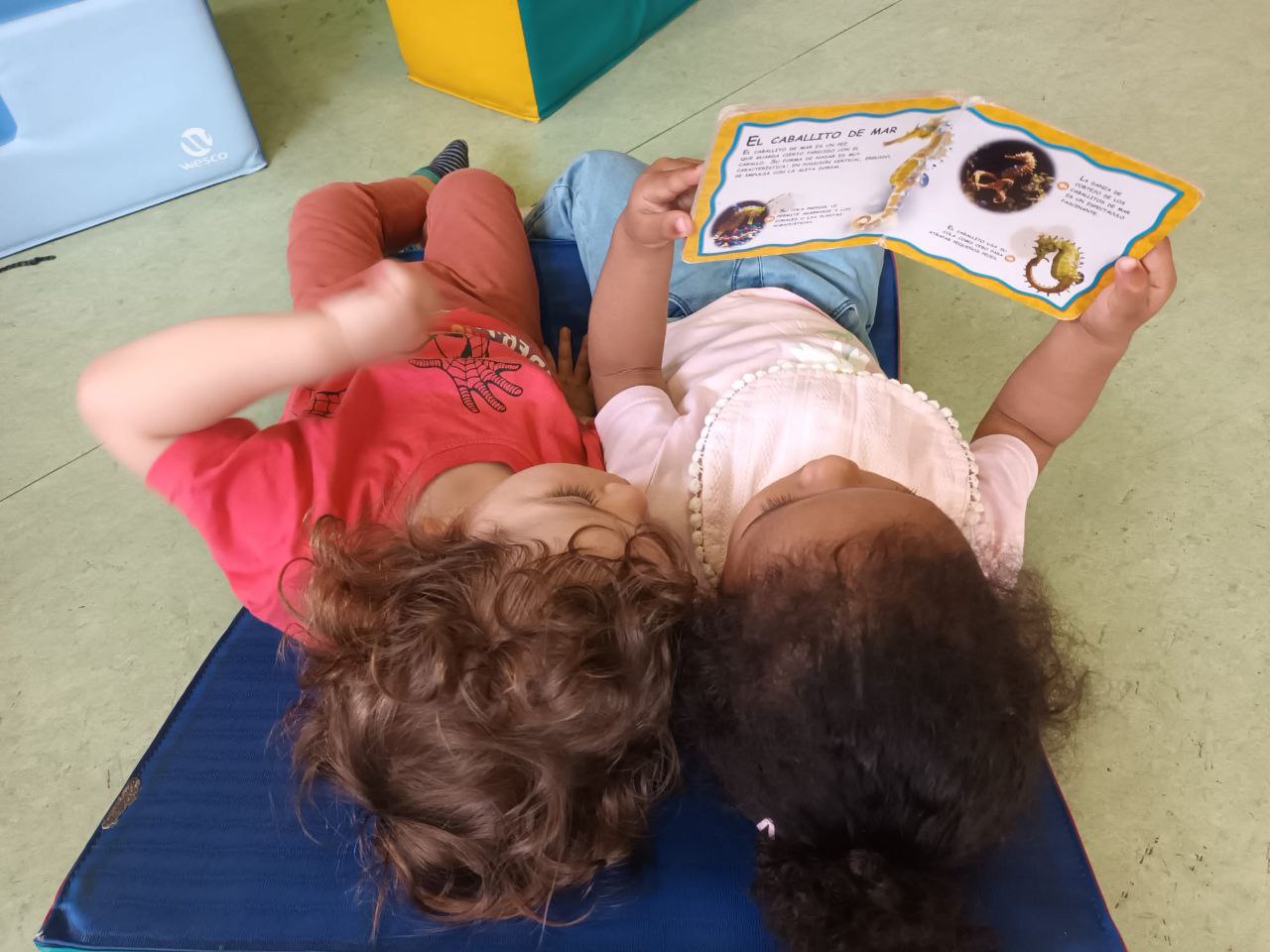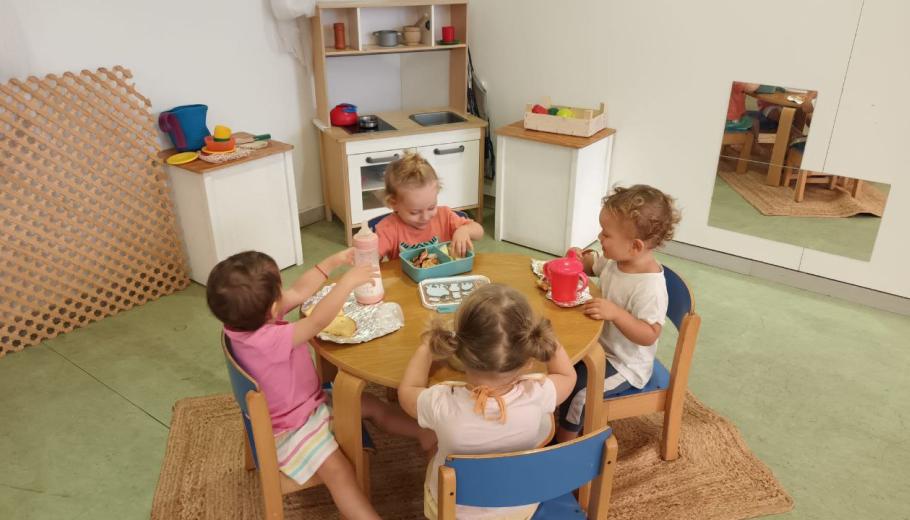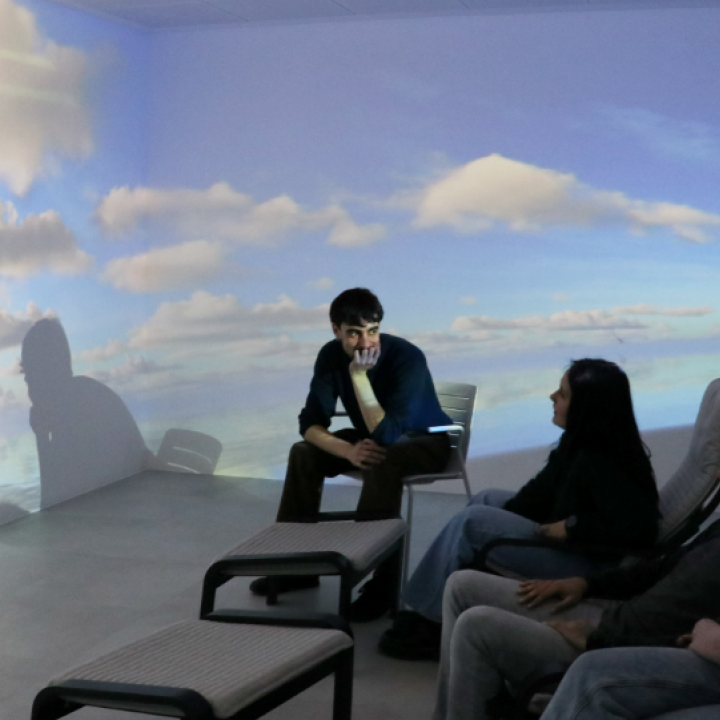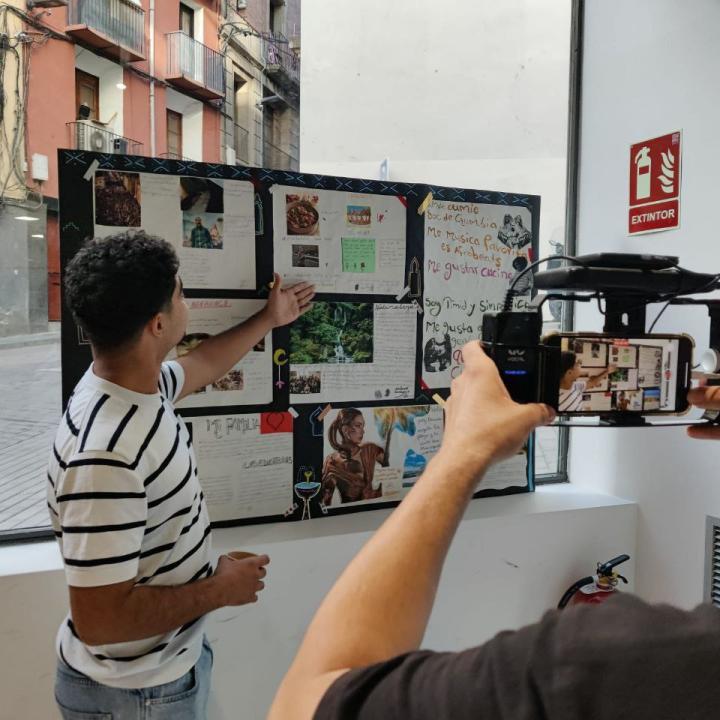The environments are spaces that generate enriched experiences in childhood and promote thinking in young people.
Children are innate explorers of the world around them, and their educational experience is deeply influenced by the spaces in which they spend their time. From early childhood to youth, the physical environments and materials within reach play a fundamental role in their cognitive, emotional and social development. In this article, we will explore the impact of the design of spaces on children's educational experience and how we can optimize them to promote rich and meaningful learning.
The use of environments as an educational tool involves creating planned spaces where children can build their learning spontaneously and actively. In this sense, the environment cannot be understood only as an environment and its materials, but as a world of interrelationships, a climate of exploration and learning.
In the schools managed by Suara Cooperativa, these environments are conceived and designed to encourage exploration, learning, play and socialization for all children, taking into account their own pace and maturation. A space rich in materials, colors, textures and safe areas for exploration, which favors the cognitive and emotional development of the little ones. At the same time, the environments invite sharing and playing with various materials, watching stories and interacting with adults and encouraging collaboration between children.
The evidence and educational experience suggests that "each environment is configured as a landscape, under an aesthetic, materials and actions that differentiate them from each other" (Bonàs et al. 2007, p. 24).
In addition, the theory of learning environments implies that through the idea of epigenesis, spaces have the quality of "modifying themselves by favoring the ability of children to transform and modify the environment in which they find themselves" (Ceppi and Zini, 1998), and which consequently favors the acquisition of new learning.

Basics and methodology for creating Environments:
- Conceptualize the environments with the transversality of the 3 learning areas (discovery of oneself, of the environment and communication and language).
- Focused on independent and constructive learning. The child is the main actor in the construction of his learning, developing his knowledge needs.
- Prioritize undirected tasks and the use of free activity as the main teaching resource.
- Various rhythms and tempos
- Appropriately calibrate the challenges, effort and eagerness to overcome so that the self-construction of learning takes place in a meaningful way according to the learning processes themselves.
- Organization of spaces to encourage the spontaneous learning of boys and girls.
- Make them accessible and with an inclusive perspective: design environments taking into account the individual sensory, cognitive and social preferences of children.
- Make adaptations: Take into account the maturation and needs of children (whether or not they have a diagnosis)
- Encourage interaction and cooperation between children of different ages.
- The educators participate as designers of the space and then act as guides, facilitators and observers to facilitate the learning process.
- Curiosity and motivation: Based on emotions and their own interests, children generate and fix learning in an optimal way.
- Trial and error: by carrying out empirical tests of hypotheses, they allow the child to make decisions, give feedback and evaluate their actions.
What types of environments work in schools?
- Symbolic Game: Representation of everyday life situations to develop social and linguistic skills.
- Constructions: Encourages creativity and the use of various materials to learn mathematical concepts.
- Plastic-Artistic: Promotes imagination and artistic expression through various techniques and materials.
- Experiments: Stimulates curiosity and exploration through experiences and trial and error. The design of these spaces must invite manipulation and observation.
- Logical and mathematical: Work on numerical concepts through games and fun activities.
- Stories: Encourages the reading, writing and dramatization of stories to promote a taste for literature.
- Game and Movement: Enhances the discovery of the body and its motor skills.
- Musical - rhythmic: musical language is involved in the neurodevelopment and acquisition of children's speech.
And at advanced educational stages?
As they grow, the educational environment becomes more diversified. Classroom layout, decor, and the availability of educational resources can significantly influence the motivation and learning of older students. Well-organized classrooms, with educational materials and varied and attractive proposals, can stimulate curiosity and active participation in the learning and socialization process. In more advanced stages, such as primary and secondary, it can also be relevant for students to create spaces that encourage students to collaborate, discuss and share their ideas.
The outdoor spaces must also be designed
In addition to indoor spaces, outdoor areas are also essential. Schoolyards, parks and play areas provide opportunities for physical activity, social interaction and nature exploration. It is essential that these spaces are well designed and equipped, to carry out activities that promote the physical and social development of children. In addition, contact with nature is particularly beneficial, as it can stimulate children's curiosity and environmental awareness.
Other educational and community environments in the area
It must be remembered that the educational experience is not limited only to formal spaces, such as school and home. It also includes public and community spaces, such as libraries, museums and recreational centers. These sites provide opportunities for informal learning and exploration of the world beyond the traditional educational environment. Look for community initiatives in your town or neighborhood!
In short, we can lose the learning opportunity that spaces bring to students at any educational stage. From early childhood to young adulthood, physical environments can influence sensory, cognitive, emotional, and social development. Therefore, it is essential to design and maintain spaces that encourage exploration, active learning and social interaction, to prepare them for a future full of opportunity and success.
Learn more:
Riera Jaume,M. A., Ferrer Ribot, M., & Ribas Mas, C. (2018). La organización del espacio por ambientes de aprendizaje en la Educación Infantil: significados, antecedentes y reflexiones. RELAdEI. Revista Latinoamericana De Educación Infantil, 3(2), 19-39.
Bonàs, M., Esteban, L., Garmendia, D., Güell, E., Mira, N., Navarro, M., Trias, I. & De Yzaguirre, A. (2007). Entramados. La experiencia de una comunidad de aprendizaje. Barcelona: Graó.
Ceppi, G. & Zini, M. (1998). Bambini, Spazi, Relazioni. Metaprogetto di ambiente per l´infanzia. Módena: Reggio Chidren





